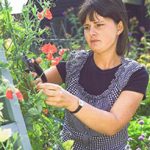Twenty-five years ago Hew and I planted some trees, each the size of a broomstick, in a area on the outer side of the moat, that was nothing but rough grass, nettles and brambles. After a quarter of a century these spindly little trees have become a woodland.
What a wonderful thing to say that I have planted a woodland. It consists of mainly deciduous trees such as maples, ash, beech, hawthorn and oak.
Trees are fascinating things and our woodland is rich in biodiversity. To quote the great Oliver Rackham, who has written more and better about woodland than any other author “Trees are wildlife just as deer or primroses. The wildlife of deciduous woodland is terribly specific. It is woodland that grows through our history and culture, and woodland – not monocrop timber plantations – is what we should value and guard as jealously as any part of our private and shared cultural heritage”.
I adore our little woodland – from the grandeur of the now mature trees to the intimacy of the woodland flowers or even the fallen leaves, the way the light falls like beams through the trees and how it spangles and how our wood supports all sorts of wildlife.
Our current project is to improve the woodland and feature more plants that are happy in woodland conditions. Snowdrops are flowers of the woodland. They spring up in midwinter, regardless of the weather, with a freedom and abundance of bluebells and will go on reliably reappearing year after year for generations.
Each year they spread a little more by seed but I speed the process up by lifting a clump and dividing it into three or four replacing the clump in the hole that I have just dug and then I distribute the rest further afield. The ideal time to do this is right now – just after the flowers have faded but before the leaves begin to die back.
We have planted over 2000 snowdrops over the last two years and will keep adding and dividing until they form a great white carpet. We have also planted hundreds of bluebells – English ones not the Spanish. English bluebells hang down just on one side, whereas the Spanish hangs on both sides, is bigger and is very invasive. English bluebells are wonderful.
Perhaps we should add some foxgloves and some hellebores….this is just the start but an exciting one. I’ll keep you briefed. Watch this woodland space…..

 Kate Elliott came to Columbine Hall in 1997 when she was sixteen. She is now head gardener but also helps with managing the property generally and in conducting guided tours.
Kate Elliott came to Columbine Hall in 1997 when she was sixteen. She is now head gardener but also helps with managing the property generally and in conducting guided tours.